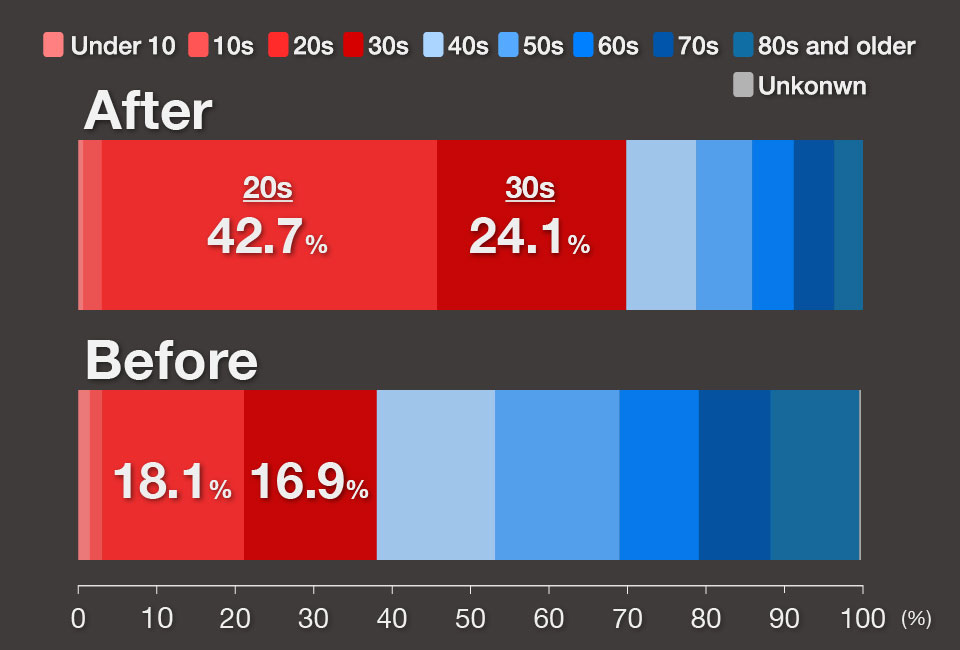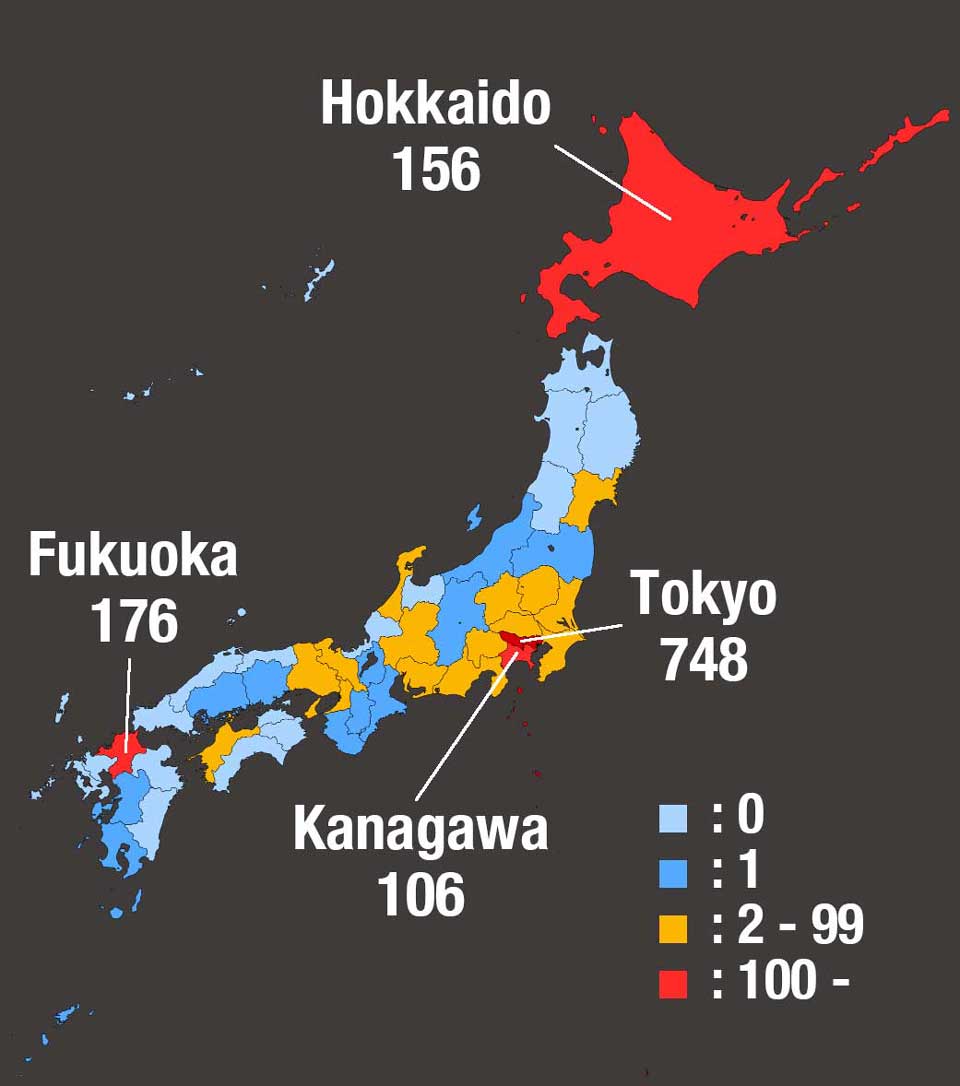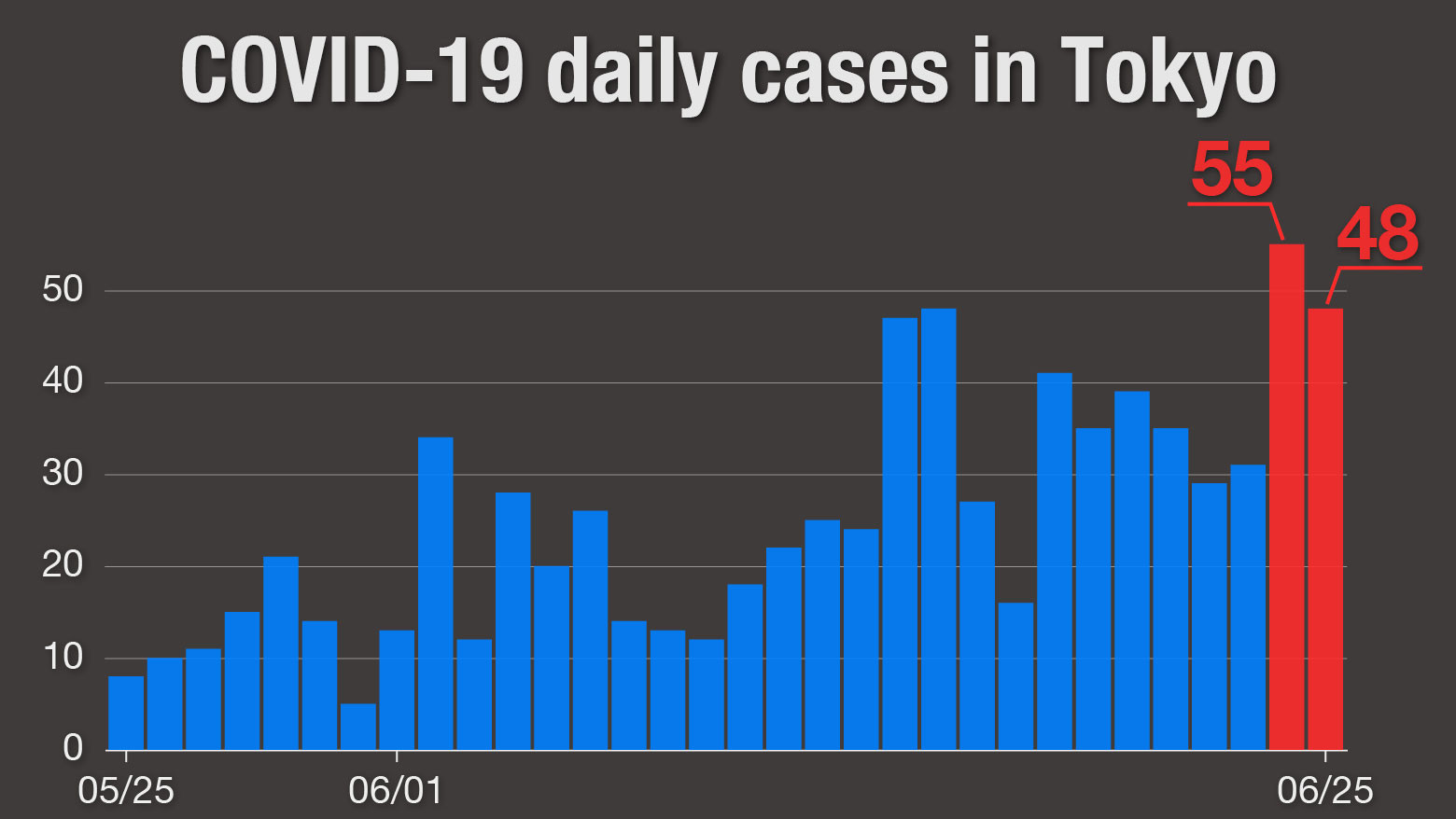In Tokyo, 55 new infection cases were confirmed on June 24th. It was the first time in seven weeks that the number of daily new cases exceeded 50. The transmission route of 23 have not yet been identified. A day later, 48 new cases were recorded, with 19 of them untraceable.
Members of the government’s expert panel on the coronavirus held a news conference on Wednesday. The head of the panel, Dr. Wakita Takaji, said the number indicates that Tokyo has clusters of infections that remain invisible. He says members of the panel are extremely concerned that some of those infections will be spreading through hospitals or other public facilities. He says it’s essential to identify any clusters as soon as possible so that what we see now does not develop into a second wave.
Japan lifted the state of emergency for all prefectures on May 25th. Economic activity has been gradually resuming since then. Amusement parks and live music venues are free to reopen. And restrictions on interprefectural travel have been lifted, so domestic travel is picking up.
Regional gaps
In the one month since the state of emergency was completely lifted, based on NHK’s tally, 1,528 new coronavirus cases have been confirmed nationwide, including those from airport quarantine checks. Nearly half of the cases — 748 — were in Tokyo.
The numbers for the capital show young people being disproportionately affected. While the city was under a state of emergency, only 18.1 percent of new cases were people in their 20s. Since restrictions were lifted, that figure has jumped to 42.7 percent. Overall, nearly 70 percent of the new cases are people under the age of 40.
Many of the new cases have been linked to nightlife establishments. Tokyo officials are aggressively testing people who work in nightlife districts and urging the businesses to implement preventive measures.

Fukuoka had the second highest number of cases in the month, with 176, followed by Hokkaido with 156 and Kanagawa with 106.
The outbreak appears to be under control in many prefectures. Seventeen, including Toyama, Okinawa and Fukui, did not report any cases at all during the month. Eleven prefectures reported only one case each, and 43 prefectures had less than 100 cases.

Kaku Mitsuo, Emeritus Professor at Tohoku University's Graduate School of Medicine, says we must be aware that infections are still spreading.
“The infections could spread to rural areas again now that travel restrictions have been lifted,” he says. “Now is the crucial phase in curbing the outbreak.”

